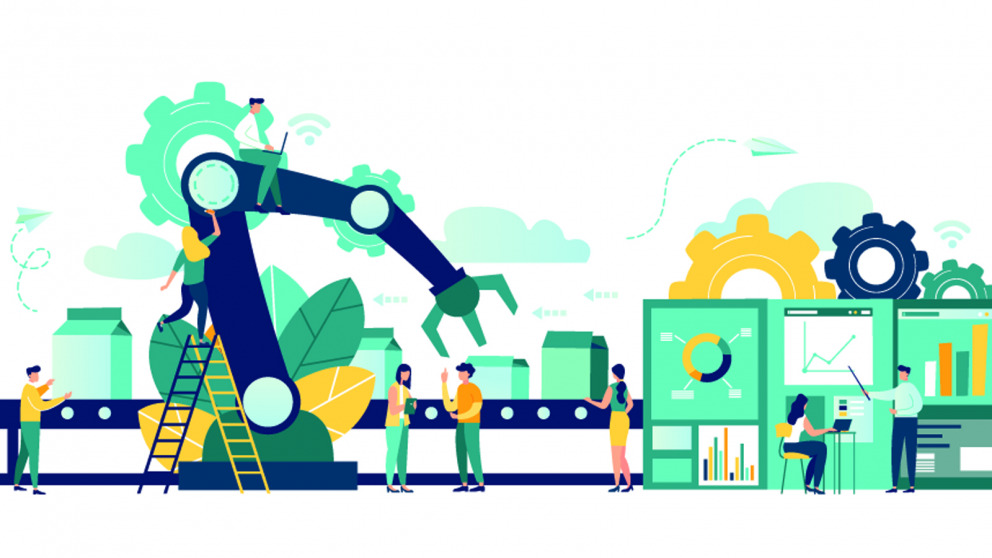Digitalisation and Sustainability: How Do DAX Companies Measure Up?
28.03.2022
Can digitalisation contribute to the development of a more sustainable economy? Sustainability has emerged as a key concern for many DAX companies – but only insofar as their customers call for improvement. Most are reluctant to make more sweeping changes. However, a few pioneering companies are using their digital prowess to help tackle some of the challenges facing society.

In order to gain an impression of the sustainability goals and values that large companies associate with their digitalisation processes, IASS researcher Silke Niehoff analysed the sustainability reports of twenty DAX companies along with twelve interviews with sustainability managers. Most of the statements revealed a view of digitalisation that focuses on direct benefits: “Companies are strongly focused on customer demands and see digitalisation as a way to make their business model more efficient without significantly altering it. As a consequence, their approach to digitalisation tends to reproduce unsustainable growth patterns,” explains the environmental scientist. Niehoff’s study has been published in the journal “Business strategy and the environment”.
Putting customers’ demands first
Digitalisation was frequently characterised in sustainability reports as a means to meet customer demands. Niehoff identifies “optimisation” as the second presumed benefit of digitalisation, which companies view as a tool that can be used to optimise existing processes and improve efficiency and speed, while also reducing costs. For example, a clothing manufacturer notes in its sustainability report: “By improving our digital capabilities across the value chain, we can not only connect with our consumers, but also become faster, better, and more efficient in all areas of our organization. We continue to make good progress with various digital accelerators.”
However, where companies prioritise environmental concerns, efforts to optimise existing processes can contribute to greater sustainability. For example, one company that actively seeks to improve the sustainability of its activities has created a platform that digitally connects different company sites and enables environmental data such as energy consumption to be collected, integrated, and analysed, and optimisation potentials to be identified.
A few of the companies examined in the study have adopted a more holistic approach to digitalisation that goes beyond efforts to secure immediate benefits. One of these is using its own resources to collaborate with external and internal stakeholders to develop guidelines for an ethical approach to artificial intelligence.
Only 3 % of measures suggest a “strong sustainability worldview”
Overall, Niehoff attributed just 3 % of the motivations, challenges and measures mentioned in the sample of reports to a “strong sustainability worldview”, while 45 % were identified as reflecting a weak and 41 % an intermediate sustainability worldview. “This worldview influences how companies actually implement digitalisation and, in the cases studied, it meant that companies pursued digitalisation in ways that failed to deliver significant gains in sustainability or that could potentially contribute to unsustainable development”, explains the researcher.
According to Niehoff, companies that understand digitalisation as an opportunity for sustainable development could act as role models for others if their efforts were more widely acknowledged and publicised through best-practice guides, policy advice and cooperation with the science community, for example. Less progressive companies could be addressed through information campaigns as well as regulations and policies to promote a more sustainable worldview and the implementation of approaches to digitalisation that will deliver sustainable outcomes.
Niehoff, S. (2022). Aligning digitalisation and sustainable development? Evidence from the analysis of worldviews in sustainability reports. Business strategy and the environment. https://doi.org/10.1002/bse.3043
Contact

